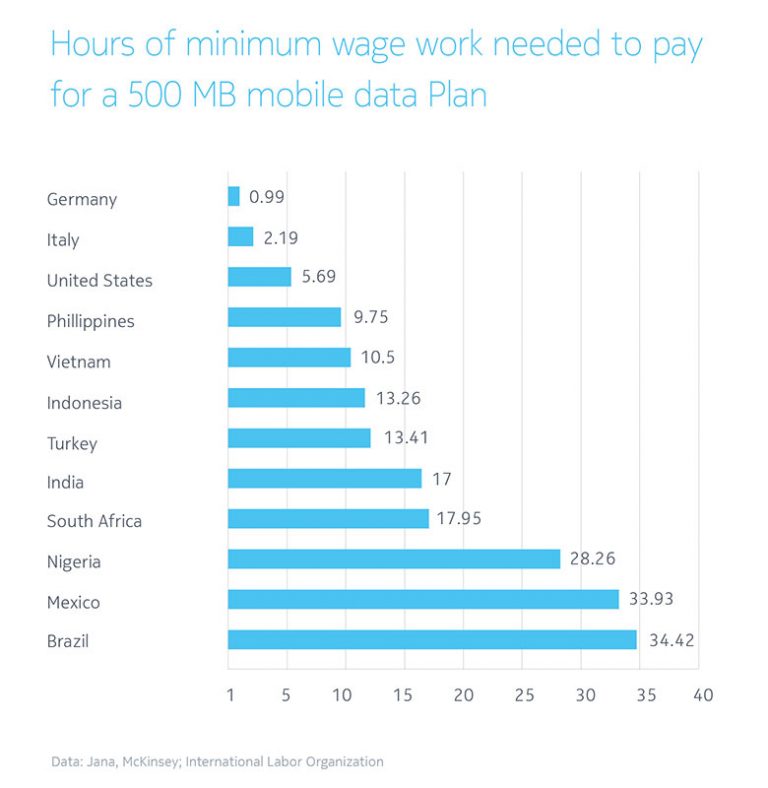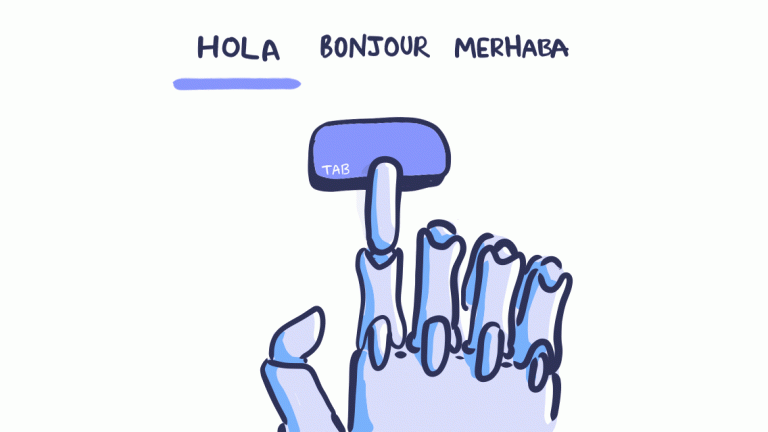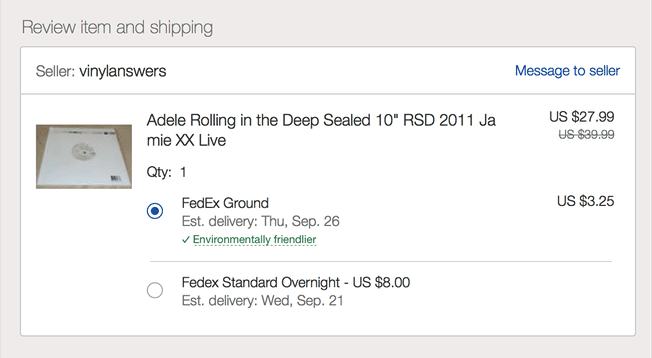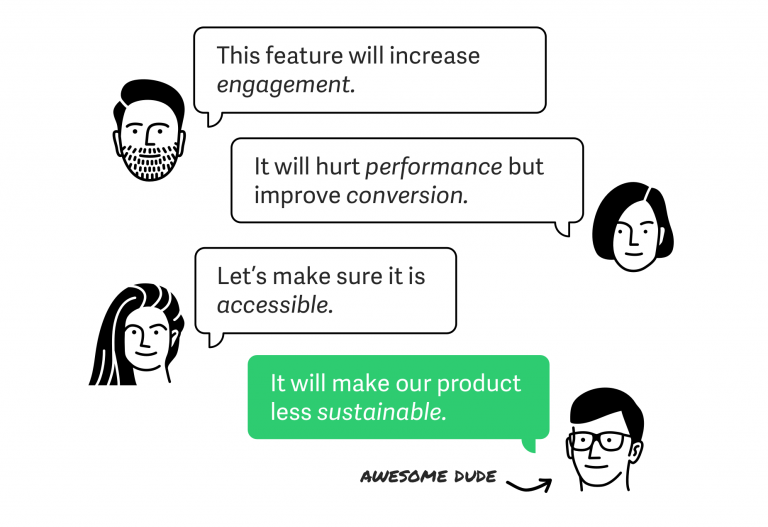leon bucher
Menu
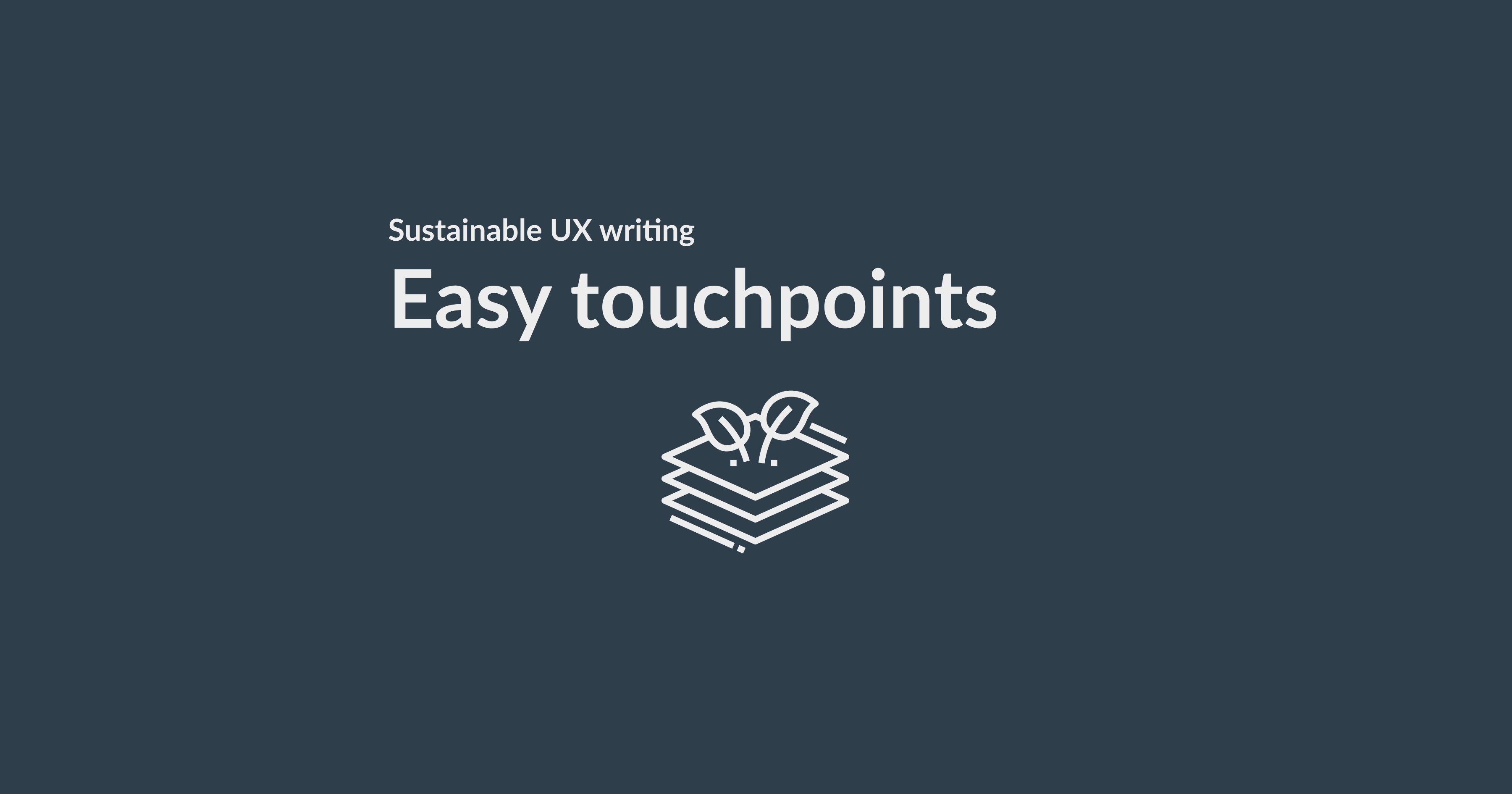
leonbucher
Sustainable UX writing: easy touchpoints for a better planet
- February 25, 2021
- 11:02 am
- sustainability, user experience
Together with integrating the climate crisis into global top-down approaches like the United Nations’ Sustainable Development Goals and the EU’s Green Agenda, individuals and companies become more sensitive towards environmental and social sustainability which affects their choices for products and who to work with.
Yet, pushed through the Covid-19 pandemic, more people than ever before use of digital products and services, work from home, connect with their families via video chat, exercise with YouTube, and watch movies via streaming. A survey by McKinsey found out with no surprise that the pandemic has sped up the adoption of digital technologies by several years.
On the first look, digital products and services seem to be the better choice in a world that creates more and more waste every day, but like the moon, it has a dark side.
The internet is the biggest thing ever built. It’s used by 4Bn people every day. And it’s mostly powered by coal.
James Christie at Sustainable UX
Not only does it take a lot of energy to power our digital lives but with our digital products and services at the front, quite often there is a real physical value chain with logistics, materials, and resources behind the interface that has an impact on our planet.
We know that we will not turn back to an age without digitalization—and we will most likely have to wait another decade until we run globally on regenerative energy.
Here are 5 touchpoints where UX writers can make a difference immediately.
1. Shift the focus on words to optimize data usage
Let’s start with a quite obvious impact we can have as UX writers. When we send a byte over the internet, we use energy every step of the way to bring our experience to our user’s device. The best thing we can do is to reduce the amount of data our designs use.
One way to a greener and more conscious usage is therefore less focus on data-heavy design elements and more on a clear and concise copy.
This is not only great for environmental sustainability but also accessibility. Although the article and stats from Ian Delaney are from 2015 I felt their impact. We include a greater diversity of people into our service if we reduce the needed amount of mobile data. This has a tremendous effect when people rely on our product or service for important or everyday tasks in their lives.
If we want to change our development for the world we have to know what people have and what they need. Reducing design, photos, and video content takes the user’s focus onto the remaining design and puts words and writing in the spotlight.
Excelling in our UX writing creates an experience where users don’t have to miss out on features to get their jobs done.
2. Make your flows clear and concise
In addition to less data-heavy screens, a great way to influence efficient user behavior is by making your interface and your UX clear, concise, and easy to flow through.
Searching for the right button, reading through FAQs and community forums to solve a problem or a confusing feature—energy on both sides of the screen gets lost when flows are inefficient and unclear. One way to be more efficient is by creating and updating user journeys and flows.
This will also increase the accessibility for people in need of keyboard navigation and screen readers who rely on good writing, site structure, and alternative texts. Videos about screen reader tests, like this one of Aaron Cannon, show how important a clear structure, well-thought sequence of tabs, and alternative texts are. And how photos, carousels, and icons can become a real obstacle that makes the product or service inaccessible.
As UX writers, we can use the “copy first” approach to draft a flow that will successfully guide the user through the app. The easier your content is to find, the fewer pages the user has to load to get their task done.
3. Show transparently what your product does—or does not ....yet
Lately, a friend of mine, who has a successful podcast, told me: “You know, I have only 5 minutes to research if I can accept the offer for a sponsor or not. If I say yes to someone who has a negative reputation concerning sustainability and I promote them on my podcast, this might backlash and affect me a lot. I need to find their information easy and fast”.
A new question to ask ourselves is therefore how can we include the company’s or product’s impact to reach environmental and social sustainability goals? And, with our focus as UX writers, make them easy to find and easy to understand?
It helps to get inspiration from companies where sustainability is part of their business model, like ARMEDANGELS. Their menu is on spot to find out what their current activities, philosophy, and goals are while using their brand voice and tone.
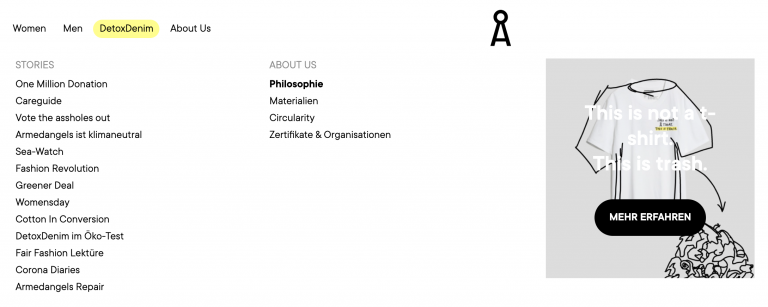
Ask yourself, do I actually know the sustainability goals of my company or the product I work for and with? Can I easily find them? And are they written in a clear, conversational, and concise way?
On your hunt, remember one of the qualities that Nick DiLallo mentions in his article about good UX writing: “Good UX writing tells the truth.” If there is nothing yet to showcase, don’t invent things. Purposefully create sustainability goals first.
4. Bring your sustainable message into your audience’s world
While the third point is a passive way to communicate your sustainability goals, this part addresses the whole fact of “do good and talk about it.” It is not easy to break the noise of the internet, yet, it is worth trying. Marketing already uses these channels with campaigns like IKEA’s recent commercials and its updates in store.
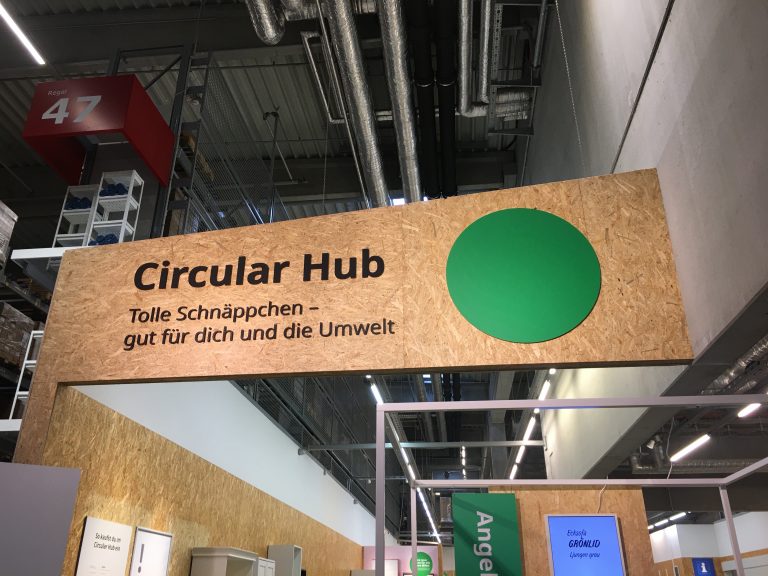
How can we make these ideas part of our digital products?
Give it a try and include sustainability in-product as part of your screens, tooltips, loading screens, blogs, and so on. We are part of our user’s world. We can make an impact, good and bad, in the way we communicate and write the right thing at the right time.
5. Incorporate a green mindset in your team
With our digital products and services at the front, we forget that change has to include our internal organizations or the physical value chain behind the interface to make an impact on our planet. Like IKEA or ARMEDANGELS, they change a lot within their organization that can’t be seen from a customer’s perspective. Quite often it comes down to a few dedicated people who start conversations, connect, and strive to make a change.
A recent survey by the UX Writing Hub showed that excellent UX writers, being a comparably new role on the product teams, know how to talk to designers, product managers, and developers. They continuously upgrade their skills, taking more courses, and are eager to facilitate conversations with team members.
If you, as a UX writer, are already connected with the product team, the marketing team, and more, great! You can start making a difference. Go into discussions, create questions, use your imagination, and facilitate the process with tools for a sustainable approach.
Well, I guess that counts for all of us. Not just for UX writers.
Final thoughts
We don’t have to wait for green energy or top-down regulations. Each of us can start making a change from where we are right now.
Like good UX writing, incorporating sustainability has to be purposeful, concise, conversational, and clear. Think about efficient ways like reducing heavy data-loaded features, but also use creative ways to incorporate your company’s strategy and your product’s impact. Be open and truthful with your progress and facilitate conversations.
When ethics, social, and environmental goals become more and more visible and viable for a company, you can create value for your customers and your team with a sustainable mindset—in the end, this will also “keep you in the market”.
Gandhi once said,
We but mirror the world. All the tendencies present in the outer world are to be found in the world of our body. If we could change ourselves, the tendencies in the world would also change. ... We need not wait to see what others do.
Gandhi
Be the change you want to see in the world.
